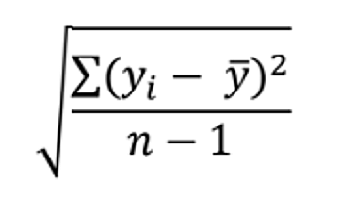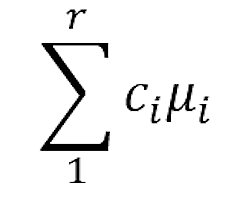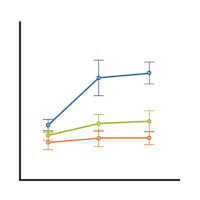Previous Posts
In many repeated measures data situations, you will need to set up the data different ways for different parts of the analyses. This article will outline one of the issues in data set up: using the long vs. the wide data format.
Interactions in statistical models are never especially easy to interpret. Throw in non-normal outcome variables and non-linear prediction functions and they become even more difficult to understand.
Learning Multilevel Models is hard enough. Even worse if you don't have a good background in linear regression. This article outlines 4 must-know concepts.
Standard deviation and standard error are statistical concepts you probably learned well enough in Intro Stats to pass the test. Conceptually, you understand them, yet the difference doesn’t make a whole lot of intuitive sense. So in this article, let’s explore the difference between the two. We will look at an example, in the hopes […]
Most survival analysis models for time-to-event data, like Cox regression, assume independence. The survival time for one individual cannot influence the survival time for another. This assumption doesn’t hold in many study designs. You may have animals clustered into litters, matched pairs, or patients in a multi-center trial with correlated survival times within a center.
When you hear about multilevel models or mixed models, you very often think of a nested design. Level 1 units nested in Level 2 units, which are in turn possibly nested in Level 3 units. But these variables that define the units and that become random factors in the model can, in fact, be crossed […]
There’s no mincing words here. Missing values can cause problems for every statistician. That’s true for a lot of reasons, but it can start with simple issues of choices made when coding missing values in a data set. Here are a few examples. Example 1: The Null License Plate Researcher Joseph Tartaro thought it would […]
When you learned analysis of variance (ANOVA), it’s likely that the emphasis was on the ANOVA table, with its Sums of Squares and F tests, followed by a post-hoc test. But ANOVA is quite flexible in how it can compare means. A large part of that flexibility comes from its ability to perform many types […]
In part 2 of this series, we got started on the various menus in Stata. This post covers an important menu that you’ll probably use often: the graphics menu. What’s in the Graphics menu The graphics menu provides an impressive variety of options for creating just about any graph you might need. Take a look […]
How do you know which method to use when you want to compare groups?












 stat skill-building compass
stat skill-building compass